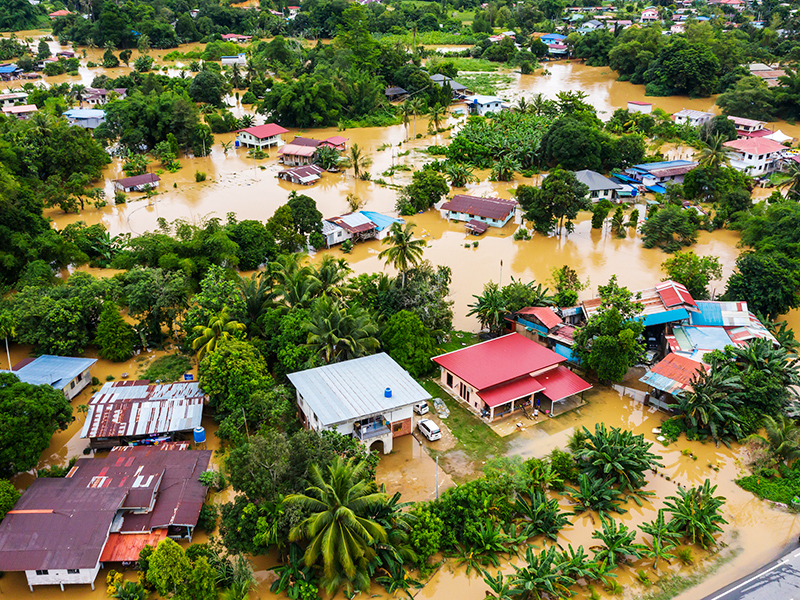
iStock / VichienPetchmai
Authors
-
Kate Coles
Former Director, Governments and Foundations, BSR
-
Annelise Thim
Former Associate Director, BSR
-
Samantha Harris
Former Associate Director, BSR
The social transformation required to solve the climate crisis is at a scale we have never seen before and will require substantial shifts in every part of our society and economy. The necessary transition away from high-carbon industries and technologies will impact all sectors and result in significant transformations in the availability and potentially quality of jobs. An estimated 6 million jobs in coal-powered electricity, petroleum extraction, and other sectors could disappear by 2030. On the flipside, the number of jobs in the renewable energy sector is anticipated to almost triple to nearly 29 million in 2050.
As the transition gathers pace, women can and should be empowered to act as change agents as energy professionals, decision makers, and consumers.
However, despite some progress, women continue to face structural and cultural barriers to their participation. Women are better represented in the renewable energy sector compared to fossil fuels, occupying over a third of jobs, yet the gender pay gap remains large. In addition, the implications of new renewable energy projects on women and their communities are often ignored.
The shift to green jobs offers an unprecedented opportunity to create a new paradigm for gender equality and women’s economic empowerment as we shift away from fossil fuels and build resilience to climate impacts and toward an economy that is fairer and more inclusive.
In this context, a gender-just transition incorporates the accountability structures needed to ensure women’s rights are protected and promoted. It also recognizes that women can also be powerful change agents during this transition: their voices, unique knowledge, and skills are vital to effective climate change solutions. Unleashing this potential will require challenging existing and new industries to consider moving away from current gendered constructs, workplaces, and policies not inclusive of women.
Pressure is growing for countries to ramp up their energy transition plans if we are to achieve the targets set out in the Paris Agreement and the Sustainable Development Goals. As this momentum grows and the energy transition becomes a reality, as a first step, it is essential to build a shared understanding of what a sustainable, green workforce looks like and how women and men can benefit equally from this transition.
How to Embed Gender Equality in Green Sectors
Moving away from fossil fuels and toward renewable energy will require the reskilling and upskilling of large workforces and building the resilience of the communities that support them. If this shift focuses exclusively on the current, predominantly male fossil fuel workforce, it will reinforce existing gender gaps in terms of workforce demographics, gender pay gaps, and discriminatory practices. It is vital to understand how business, governments, and development partners can bring women into traditional green jobs, including renewable energy, environmental research, and conservation, and close existing gender gaps for more inclusive and diverse green workforces.
There are also opportunities to integrate gender equality across supply chains in green sectors. In renewable energy supply chains, for example, little is known of how the industry is considering the differentiated impacts on women and men in human rights due diligence, an issue likely to increase as the sector continues to expand rapidly. There is a need to explore the gender dimensions of renewable energy procurement, the gendered impacts on local communities, and the potential to support and source from women-owned renewable energy-related businesses.
How to Ensure Decent Work for Women in Low-Carbon Jobs
A gender just transition will also mean looking beyond traditional “green jobs” within the energy sector to consider low-carbon jobs that contribute to broader societal resilience. This includes healthcare workers, educators, caregivers, small scale agriculture workers—workforces which are highly feminized but often underpaid and with precarious contracts and working hours. The COVID-19 pandemic has shed light on the vulnerable situation of these workers, many of whom are women of color, who make up most retail, health care, and service sector employees and are essential to the continued health and functioning of our communities.
Solutions to increase green jobs can do better by expanding our focus to be gender-just and strive for gender equality. Technological changes are impacting many jobs in these sectors, which women may be less prepared for given the gender gap in STEM skills. Business and governments can create and support decent job growth in these sectors and ensure meaningful and equal economic empowerment for women. However, we need research to understand how these jobs can complement the growth of green jobs (i.e., location of renewable energy plants, training and education opportunities for future green jobs, etc.). Low-carbon jobs can also be leveraged to contribute to a just transition. For example, retail workers support in-store recycling programs, but they will require adequate training and skills development.
In the words of Mary Robinson, former Irish president, UN climate envoy and current UN rights commissioner:
“Climate change is a man-made problem with a feminist solution.”
Today, we have an opportunity to design and implement gender-just solutions to the major challenge of our time: ensuring that the transition to renewable energy leaves no one behind. Join us as we seek to answer these questions and help to shape a truly just transition.
BSR’s latest sustainability insights and events straight to your inbox.
Topics
Let’s talk about how BSR can help you to transform your business and achieve your sustainability goals.







